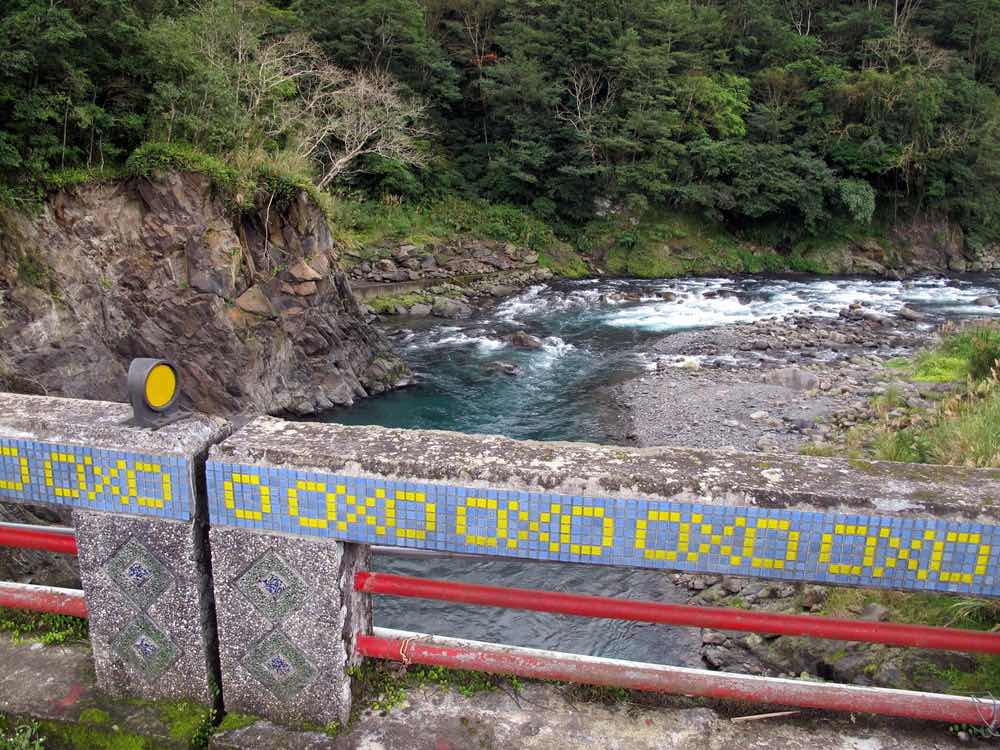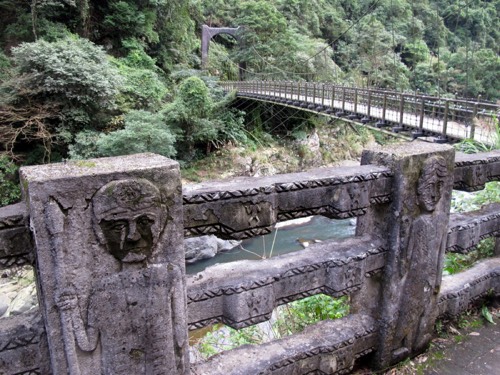
Indigenous motifs decorate a bridge in Wulai, Taiwan.
Taiwan used to be part of China, and most Taiwanese trace their ancestry to the mainland Chinese provinces of Fujian or Guangdong. Yet one facet of Taiwan making it quite different to China is the presence of indigenous ethnic minorities which speak Austronesian languages utterly unlike Mandarin. The 2.4% of the population classified as aboriginal live in every part of the country. That said, it’s in certain remote and/or mountainous districts that these aboriginal cultures are best appreciated.
Let’s start our roundup of Taiwan’s most fascinating aboriginal destinations with the indigenous enclave nearest Taipei, Wulai.
Wulai
Just an hour’s drive from central Taipei, Wulai offers an enticing combination of natural scenery, hot springs, fabulous birdwatching and Atayal culture. It’s too far from the metropolis – and physically much too rugged – to attract people who need to commute to the big city, so there’s been little development. The population is a mere 6,215 (as of mid-2017), spread across 321 square km.

The view near Neidong Forest Recreation Area.
Most visitors start at what’s known as Wulai Old Street. Quite a few never get beyond this cluster of shops, restaurants and hotels – which is a big mistake, as the approach to Fushan (the little village at the end of Xinfu Road) is gorgeous, as is Tonghou Forestry Road. The latter is around 7 km east of where the outdoors riverside hot springs pools stood until they were demolished earlier this year.
Once you get beyond the Old Street, the view is dominated by various shades of green covering the hillsides, and the turquoise of the Nanshi River and other waterways. Amazingly, Wulai has its own railway system, a narrow-gauge trolley train which goes to Wulai Waterfall. Built over a century ago so laborers could push timber-laden wagons down to the lowlands, it’s now an electric shuttle service for tourists. Rattling along at speeds of up to 16 km/hour in the smallest passengers carriages you’ve ever seen, this a fun way of approaching the highest cascade in Greater Taipei.
Hiking from the waterfall to Neidong National Forest Recreation Area isn’t difficult, but having a car and driver at your disposal means you’ll spend less time getting there and more time secluding yourself within the forest.
Birds and boar meat
Ornithologists are in for a treat, as Wulai hosts some notable endemic species including the Taiwan Scimitar Babbler, the Taiwan Whistling Thrush, and the Formosan Magpie. An easy-to-spot endemic subspecies is the Plumbeous Redstart; despite its name, it’s blue and orange.
Wulai Old Street does has its raison d’etre, you’ll realize if you stop here after a hard morning of sightseeing or hiking. Several restaurants serve Atayal specialties (the mountain-boar sausages are especially good), and if you want to shelter from the elements for a while, Wulai Atayal Museum is recommended. Admission is free and the displays – which cover subjects as diverse as indigenous beliefs, clothing, housing and weapons – are in both Chinese and English. The museum also explains why tattoos once adorned the faces of married men and women: Before most of them became Christian, tribal folk believed only those with tattoos could cross the “Rainbow bridge” and enter paradise.
Tailored Taiwan Private Tours
At Life of Taiwan, we specialise in catering to the needs of English-speaking and European visitors. Join our luxury tours or family tours of Taiwan for an unforgettable journey through Taiwan. Contact us today to plan your perfect Taiwan private tour.
